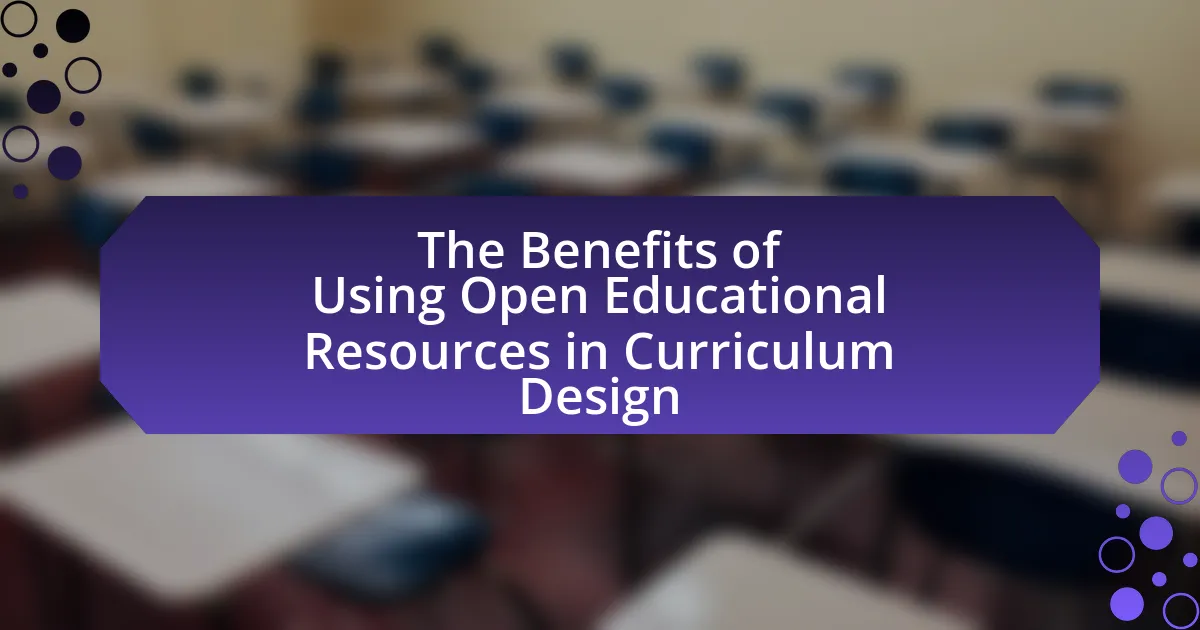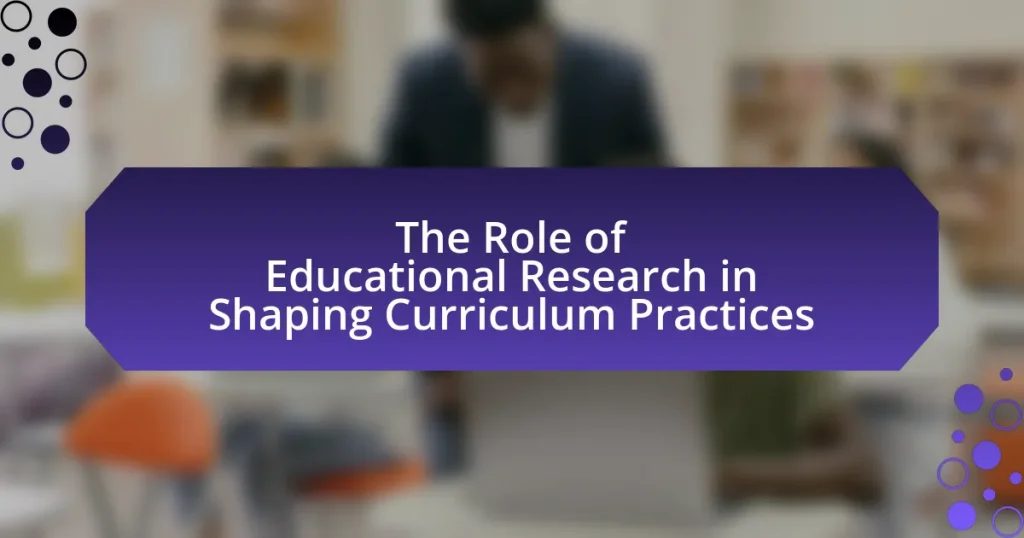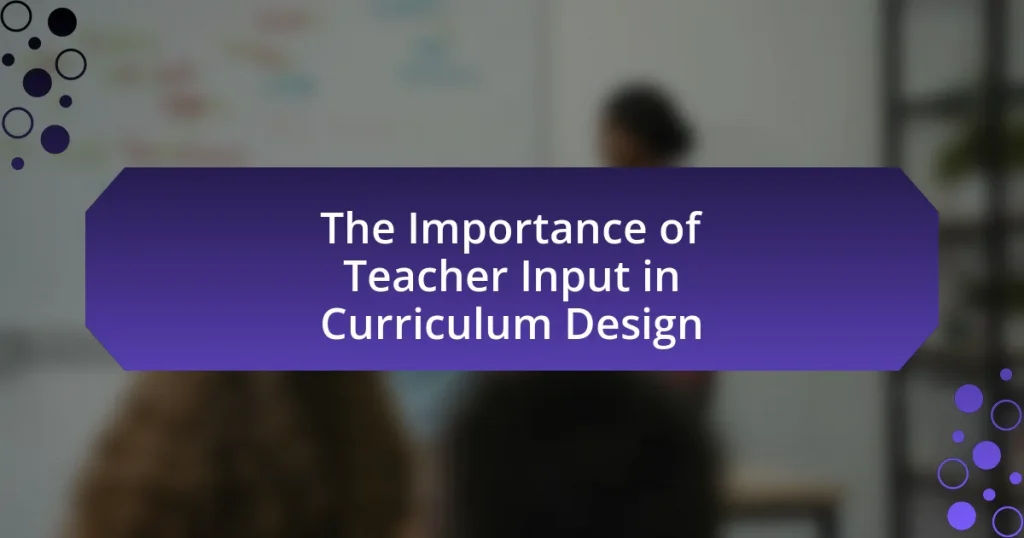Open Educational Resources (OER) are freely accessible and openly licensed educational materials that enhance teaching, learning, and research. This article explores the benefits of using OER in curriculum design, highlighting their role in promoting accessibility, cost savings, and customization of educational resources. It discusses how OER differ from traditional resources, the types of materials classified as OER, and their implications for diverse learning needs. Additionally, the article addresses challenges associated with implementing OER, common misconceptions, and best practices for educators to ensure effective integration into curricula.
--Open-Educational-Resources-(OER)-are-teaching,-learning,--1.webp)
What are Open Educational Resources (OER)?
Open Educational Resources (OER) are teaching, learning, and research materials that are freely accessible and openly licensed, allowing users to retain, reuse, revise, remix, and redistribute them. OER can include a variety of resources such as textbooks, course materials, videos, and software, which are designed to enhance educational opportunities. The concept of OER emerged from the need to provide equitable access to quality educational resources, as highlighted by the UNESCO OER Declaration in 2002, which emphasized the importance of open access in education.
How do OER differ from traditional educational resources?
Open Educational Resources (OER) differ from traditional educational resources primarily in their accessibility and licensing. OER are freely available for anyone to use, modify, and distribute, often under licenses like Creative Commons, which promote sharing and collaboration. In contrast, traditional educational resources typically require payment or subscription and have restrictive copyright policies that limit their use and adaptation. This fundamental difference allows OER to foster greater inclusivity and adaptability in educational settings, enabling educators to tailor materials to meet diverse learning needs.
What types of materials are classified as OER?
Open Educational Resources (OER) include a variety of materials such as textbooks, course readings, lecture notes, assignments, tests, projects, audio, video, and software. These resources are characterized by their availability for free use and adaptation, often under licenses that allow for modification and redistribution. The UNESCO definition of OER emphasizes that they are teaching, learning, and research materials that are in the public domain or released under an open license, which supports their accessibility and adaptability in educational settings.
Why is the accessibility of OER important in education?
The accessibility of Open Educational Resources (OER) is crucial in education because it ensures that all learners, regardless of their socioeconomic status, can access high-quality educational materials. This inclusivity promotes equity in learning opportunities, allowing diverse student populations to benefit from the same resources. Research indicates that OER can significantly reduce educational costs; for instance, a study by the University of Massachusetts Amherst found that students using OER saved an average of $100 per course. Furthermore, accessible OER supports personalized learning, enabling educators to tailor resources to meet the specific needs of their students, thereby enhancing engagement and learning outcomes.
What role do OER play in curriculum design?
Open Educational Resources (OER) play a crucial role in curriculum design by providing accessible, adaptable, and cost-effective educational materials. OER enable educators to customize content to meet diverse learning needs, fostering inclusivity and engagement. Research indicates that the use of OER can enhance student learning outcomes, as they allow for the integration of up-to-date information and diverse perspectives, which traditional resources may lack. For instance, a study by Wiley and Hilton (2018) found that students using OER performed as well or better than those using traditional textbooks, demonstrating the effectiveness of OER in improving educational quality.
How can OER enhance curriculum flexibility and adaptability?
Open Educational Resources (OER) enhance curriculum flexibility and adaptability by providing educators with customizable materials that can be easily modified to meet diverse learning needs. This adaptability allows instructors to tailor content to specific student demographics, learning styles, and educational contexts, thereby improving engagement and effectiveness. Research indicates that OER can lead to improved learning outcomes, as they enable the integration of current information and local examples, which traditional resources may not offer. For instance, a study by Wiley and Hilton (2018) found that students using OER performed as well or better than those using traditional textbooks, highlighting the positive impact of adaptable resources on learning.
What are the implications of using OER for diverse learning needs?
The implications of using Open Educational Resources (OER) for diverse learning needs include increased accessibility, customization of learning materials, and enhanced engagement. OER allows educators to adapt resources to meet the varied learning styles and paces of students, ensuring that all learners can access content that suits their individual needs. For instance, a study by the William and Flora Hewlett Foundation found that OER can significantly improve student outcomes by providing tailored educational experiences. Additionally, OER promotes inclusivity by offering materials in multiple formats, such as text, audio, and video, which cater to learners with disabilities or different language proficiencies. This adaptability and accessibility ultimately foster a more equitable learning environment.

What are the benefits of using OER in curriculum design?
The benefits of using Open Educational Resources (OER) in curriculum design include increased accessibility, cost savings, and enhanced customization. OER provides free or low-cost educational materials, making learning more accessible to diverse student populations. According to a study by the Babson Survey Research Group, 65% of students reported that the cost of textbooks affects their choice of courses, highlighting the financial relief OER can offer. Additionally, OER allows educators to tailor content to meet specific learning objectives and local contexts, fostering a more relevant and engaging learning experience. This adaptability is supported by research from the Institute for the Study of Knowledge Management in Education, which found that customized resources can lead to improved student outcomes.
How do OER contribute to cost savings for educational institutions?
Open Educational Resources (OER) contribute to cost savings for educational institutions by providing free or low-cost access to high-quality educational materials. This eliminates the need for institutions to purchase expensive textbooks and proprietary resources, which can significantly reduce overall educational expenses. For instance, a study by the Babson Survey Research Group found that institutions using OER reported savings of up to $1.5 million annually by reducing textbook costs for students. Additionally, OER allows for the customization and adaptation of materials, further enhancing resource efficiency and reducing costs associated with content creation.
What financial impacts do OER have on students?
Open Educational Resources (OER) significantly reduce financial burdens on students by eliminating or lowering the costs associated with traditional textbooks and course materials. Research indicates that students using OER save an average of $100 to $200 per course, which can lead to substantial overall savings, especially for those enrolled in multiple classes. A study by the University of Massachusetts Amherst found that students who utilized OER reported a 30% increase in course completion rates, suggesting that financial relief from material costs positively impacts academic success.
How can OER reduce the overall budget for curriculum development?
Open Educational Resources (OER) can significantly reduce the overall budget for curriculum development by providing free access to high-quality educational materials. By utilizing OER, educational institutions can eliminate or greatly reduce the costs associated with purchasing textbooks and proprietary resources, which can account for a substantial portion of curriculum expenses. For instance, a study by the Babson Survey Research Group found that institutions using OER reported savings of up to 90% on course materials, allowing funds to be reallocated to other critical areas such as faculty development and technology enhancements. Additionally, OER promotes collaboration among educators, enabling them to share and adapt resources, further decreasing the need for costly original content creation.
In what ways do OER promote collaboration among educators?
Open Educational Resources (OER) promote collaboration among educators by providing accessible, shareable, and adaptable teaching materials. These resources enable educators to work together in developing and refining content, fostering a community of practice. For instance, platforms like OER Commons and MERLOT allow educators to share their resources, receive feedback, and collaborate on curriculum design, which enhances the quality of educational materials. Additionally, studies show that collaborative use of OER can lead to improved teaching practices and student outcomes, as educators can leverage each other’s expertise and experiences.
How can sharing OER foster a community of practice?
Sharing Open Educational Resources (OER) fosters a community of practice by enabling collaboration and knowledge exchange among educators. When educators share OER, they create a platform for collective learning, allowing them to discuss best practices, share experiences, and refine teaching strategies. This collaborative environment enhances professional development, as educators can access diverse resources and perspectives, leading to improved instructional quality. Research indicates that communities of practice formed around OER sharing can lead to increased engagement and innovation in teaching methods, as seen in studies conducted by the William and Flora Hewlett Foundation, which highlight the positive impact of OER on collaborative learning among educators.
What tools and platforms facilitate collaboration around OER?
Tools and platforms that facilitate collaboration around Open Educational Resources (OER) include Google Drive, GitHub, and OER Commons. Google Drive allows users to create, share, and collaboratively edit documents and resources in real-time, enhancing teamwork among educators. GitHub serves as a platform for version control and collaborative development of educational materials, enabling users to track changes and contributions effectively. OER Commons is a dedicated platform for sharing and discovering OER, providing a space for educators to collaborate on resource creation and adaptation. These tools support the collaborative nature of OER by enabling easy sharing, editing, and feedback among users.

What challenges are associated with implementing OER in curriculum design?
Implementing Open Educational Resources (OER) in curriculum design presents several challenges, including issues related to quality assurance, faculty training, and institutional support. Quality assurance is critical, as educators must evaluate the credibility and relevance of OER materials, which can vary significantly in quality. Faculty training is essential because many educators may lack the skills to effectively integrate OER into their teaching practices, leading to inconsistent implementation. Additionally, institutional support is often inadequate; without strong backing from administration, educators may struggle to find time and resources to adopt OER, hindering widespread adoption. These challenges highlight the complexities involved in successfully integrating OER into educational frameworks.
What are the common misconceptions about OER?
Common misconceptions about Open Educational Resources (OER) include the belief that they are of lower quality than traditional educational materials, that they are only suitable for certain subjects, and that they require extensive technical skills to use effectively. Research indicates that many OER are peer-reviewed and created by reputable institutions, ensuring high quality comparable to conventional resources. Additionally, OER span a wide range of subjects, making them versatile for various educational contexts. Finally, while some OER may involve technical aspects, many platforms are designed to be user-friendly, requiring minimal technical expertise for educators to implement them in their curriculum.
How can these misconceptions hinder the adoption of OER?
Misconceptions about Open Educational Resources (OER) can significantly hinder their adoption by creating barriers to understanding their value and accessibility. For instance, the belief that OER lacks quality compared to traditional resources can deter educators from integrating them into their curriculum, despite studies showing that many OER are peer-reviewed and align with educational standards. Additionally, misconceptions regarding the complexity of using OER can lead to resistance, as educators may feel overwhelmed by the perceived need for technical skills, even though many platforms are user-friendly and provide support. These misunderstandings ultimately limit the potential for OER to enhance educational equity and innovation, as they prevent educators from exploring diverse, high-quality resources that could benefit their students.
What strategies can be employed to overcome these misconceptions?
To overcome misconceptions about the benefits of using Open Educational Resources (OER) in curriculum design, institutions can implement targeted educational initiatives. These initiatives include workshops that demonstrate the effectiveness and accessibility of OER, providing case studies that showcase successful integration in various educational settings, and offering training sessions for educators on how to effectively utilize OER in their teaching practices. Research indicates that institutions that actively promote OER through these strategies see increased adoption rates and improved perceptions among educators and students, as evidenced by a study conducted by the Open Education Group, which found that 85% of faculty reported positive experiences with OER after receiving proper training and support.
What technical and logistical challenges do educators face with OER?
Educators face several technical and logistical challenges with Open Educational Resources (OER), including issues related to accessibility, digital literacy, and resource integration. Accessibility challenges arise when OER materials are not designed to be usable by all students, particularly those with disabilities, which can hinder effective teaching. Digital literacy is another significant challenge, as educators and students may lack the necessary skills to effectively navigate and utilize OER platforms, limiting their potential benefits. Additionally, integrating OER into existing curricula can be complex, requiring time and effort to align resources with learning objectives and standards. These challenges are supported by research indicating that while OER can enhance educational opportunities, their successful implementation often depends on overcoming these technical and logistical barriers.
How can institutions support educators in navigating these challenges?
Institutions can support educators in navigating challenges by providing access to comprehensive training and resources on Open Educational Resources (OER). This support enables educators to effectively integrate OER into their curriculum design, enhancing teaching and learning experiences. Research indicates that institutions that offer professional development programs focused on OER usage see improved educator confidence and student engagement, as evidenced by a study from the University of Massachusetts, which found that 78% of educators reported increased satisfaction with their teaching methods after OER training.
What resources are available to assist in the implementation of OER?
Resources available to assist in the implementation of Open Educational Resources (OER) include various platforms, guides, and communities. Notable platforms such as OER Commons and OpenStax provide access to a wide range of openly licensed educational materials. Additionally, organizations like Creative Commons offer licensing tools that help educators understand how to use and share OER legally. Furthermore, the Open Education Consortium connects educators and institutions to share best practices and resources for OER implementation. These resources are validated by their widespread use in educational settings, demonstrating their effectiveness in enhancing curriculum design.
What best practices should educators follow when integrating OER into their curriculum?
Educators should follow several best practices when integrating Open Educational Resources (OER) into their curriculum, including aligning OER with learning objectives, ensuring accessibility, and fostering collaboration. Aligning OER with specific learning objectives ensures that the resources effectively support the intended educational outcomes, enhancing student engagement and comprehension. Ensuring accessibility involves selecting materials that are usable by all students, including those with disabilities, which is crucial for inclusive education. Fostering collaboration among educators can lead to the sharing of best practices and resources, ultimately enriching the curriculum. Research indicates that effective OER integration can improve student learning outcomes and increase resource availability, as highlighted in the “Open Educational Resources: A Review of the Literature” by Wiley and Hilton, which emphasizes the positive impact of OER on educational practices.
How can educators evaluate the quality of OER?
Educators can evaluate the quality of Open Educational Resources (OER) by applying criteria such as relevance, accuracy, accessibility, and adaptability. Relevance ensures that the OER aligns with curriculum goals and learning outcomes, while accuracy verifies the correctness of the content through peer reviews or expert endorsements. Accessibility involves checking if the resources are easily usable by all students, including those with disabilities, and adaptability assesses whether the materials can be modified to fit different teaching contexts. Research indicates that using established evaluation frameworks, such as the Achieve OER Rubric, can provide structured guidance for assessing these criteria effectively.
What steps can be taken to ensure OER align with learning objectives?
To ensure Open Educational Resources (OER) align with learning objectives, educators should first conduct a thorough analysis of the learning objectives to identify specific knowledge and skills required. This analysis allows for the selection of OER that directly supports these objectives. Next, educators should evaluate the quality and relevance of the OER by assessing factors such as accuracy, currency, and pedagogical effectiveness. Additionally, aligning OER with assessment methods ensures that the resources facilitate the desired learning outcomes. Research indicates that aligning instructional materials with learning objectives enhances student engagement and achievement, as evidenced by studies showing improved performance in courses utilizing well-aligned resources.
It is not possible to provide an answer to the question “
” as it does not contain a specific inquiry or context to address.



